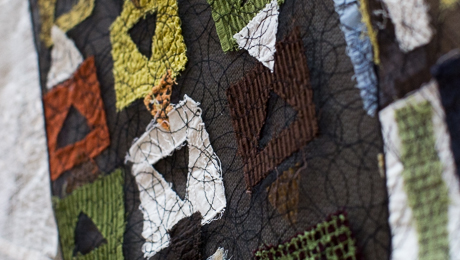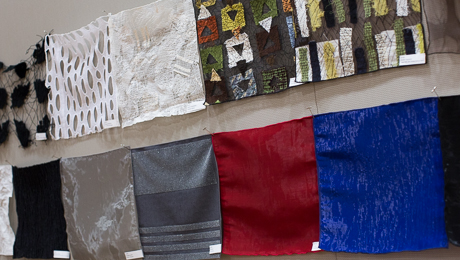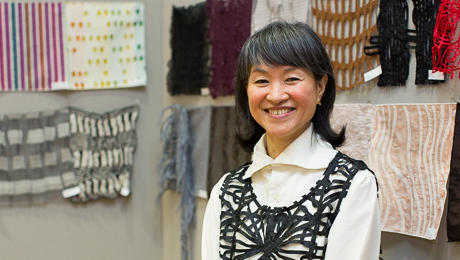Stainless steel, aluminum, bird feathers and bamboo may not seem like materials that would be incorporated into textiles—unless you’re talking about Japan’s Nuno Corporation, a force of creativity in Tokyo that has revolutionized how people think about fabrics.
Nuno was begun by Jun’ichi Arai in the ’80s, with help of current CEO and design director Reiko Sudo. The company now boasts a reputation as a world leader in textile design. Its pieces, beloved for mixing traditional styles with modern sensibilities, have been exhibited across the globe, including at New York’s Museum of Modern Art, the Boston Museum of Fine Arts and London’s Victoria and Albert Museum. Some of the textiles were worked into architecture for a world-famous luxury brand store in Tokyo.
Ms. Sudo revealed some of the most astounding techniques the corporation employs during the lecture, “Do You Nuno?” at the George Washington University on Thursday. The event was organized by The Textile Museum with the help of Nancy Truman Evans, assistant professor of interior design at GW.
“Nuno creates beautiful and often witty fabrics that reassert the potential of the textile medium,” Tom Goehner, curator of education at The Textile Museum, said at Thursday’s event.

Ms. Sudo was just 29 when she walked into a gallery that was showing textiles used by Issey Miyake and Yohji Yamamoto, some of Japan’s most famous fashion designers. She was immediately blown away by the intricate, homespun quality of the pieces.
“At the time, I was working in print textile designs and unsatisfied with just drawing patterns, so I wove occasional tapestries for my artist friends on the side. Yet, I was shocked to see textiles looking more handmade than my own,” she said.
She had to know who had created the textiles. The answer was a pivotal turning point in her life: It turned out the artist was Mr. Arai, one of the most revered craft-weaving figures in Japan. The two decided to team up and launch Nuno, which is Japanese for “functional fabric.”
Mr. Arai departed the company in the late ’80s, leaving 34-year-old Ms. Sudo in charge. She had been doing much of the design work to go with the structure Mr. Arai had invented, but in her new capacity, she began brainstorming innovative changes that would become the corporation’s signature. She married modern aesthetic with traditional weaving and dyeing techniques—an approach that continues to guide Nuno today.
“People said I’d be lucky to keep [Nuno] going for three years, but now we’re heading into our 30th year,” Ms. Sudo said.
Nuno has delighted the art community with its penchant for the surprising. Ms. Sudo wove feathers and silk together on a loom for the piece, “Feather Flurries.” The technique is now displayed in more than 20 permanent collections worldwide. She’s also tried her hand at creating lace patterns using ancient German techniques, and burning and tattering textiles to generate unique designs.
“We’ve made textiles with metal, paper, packing tape—all sorts of crazy materials,” Ms. Sudo said.
Students, faculty and members of The Textile Museum were able to purchase Nuno textiles at a pop-up shop in the Marvin Center following the lecture. Ms. Sudo flitted through a crowd that included many of Ms. Evans’s interior design students, answering questions about her work.
“I thought she was amazing—I didn’t know about her beforehand, but it was so interesting to see how much work goes into designing textiles,” said junior Ariane Stern, an interior design major.
Mr. Goehner explained that inviting a world-renowned textile artist like Ms. Sudo to GW represents the kind of programming The Textile Museum will offer once it moves to campus with the new George Washington University museum.
“I think this event demonstrates how we’d like to join forces and collaborate with students and professors moving forward,” Mr. Goehner said.



